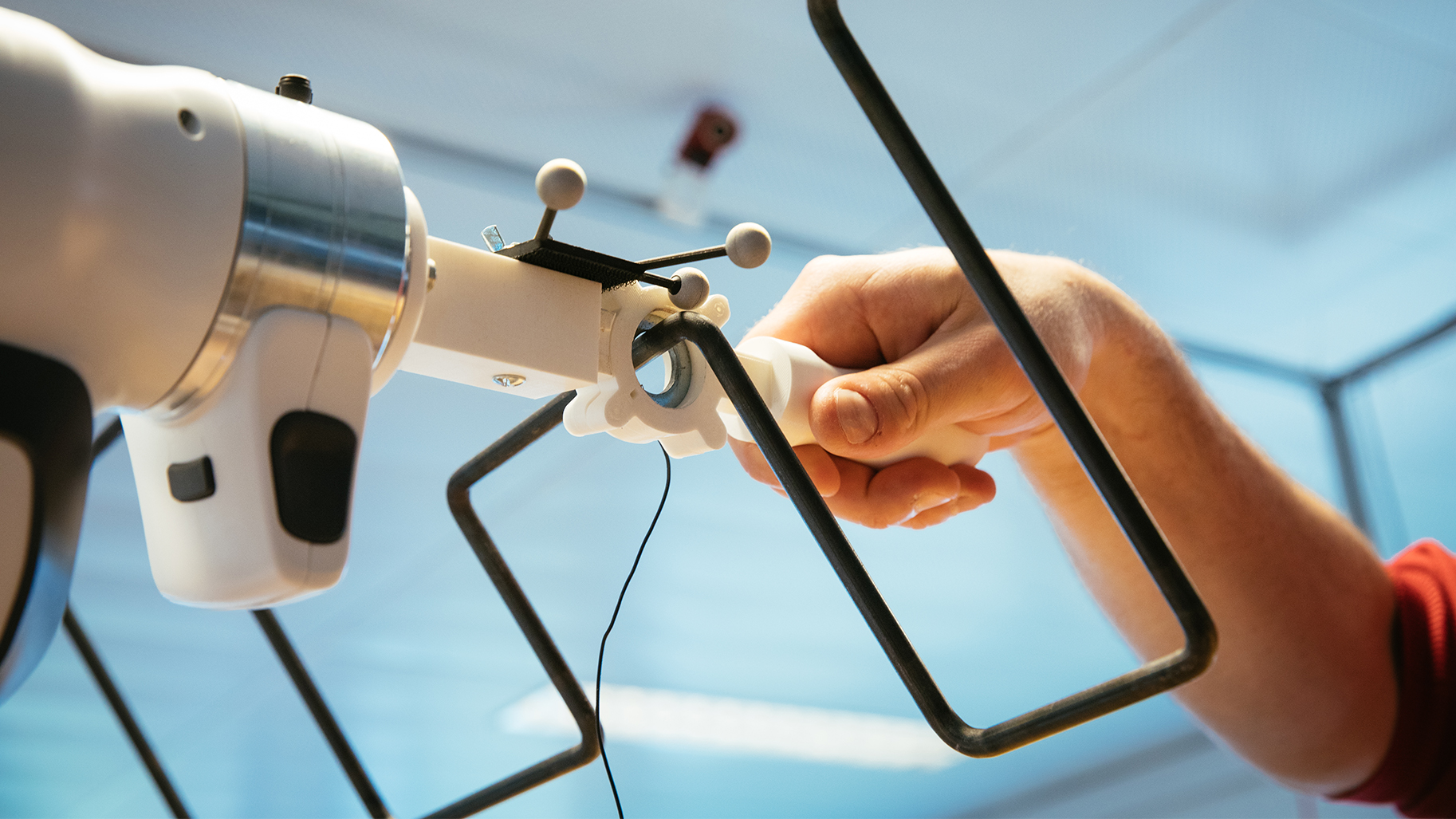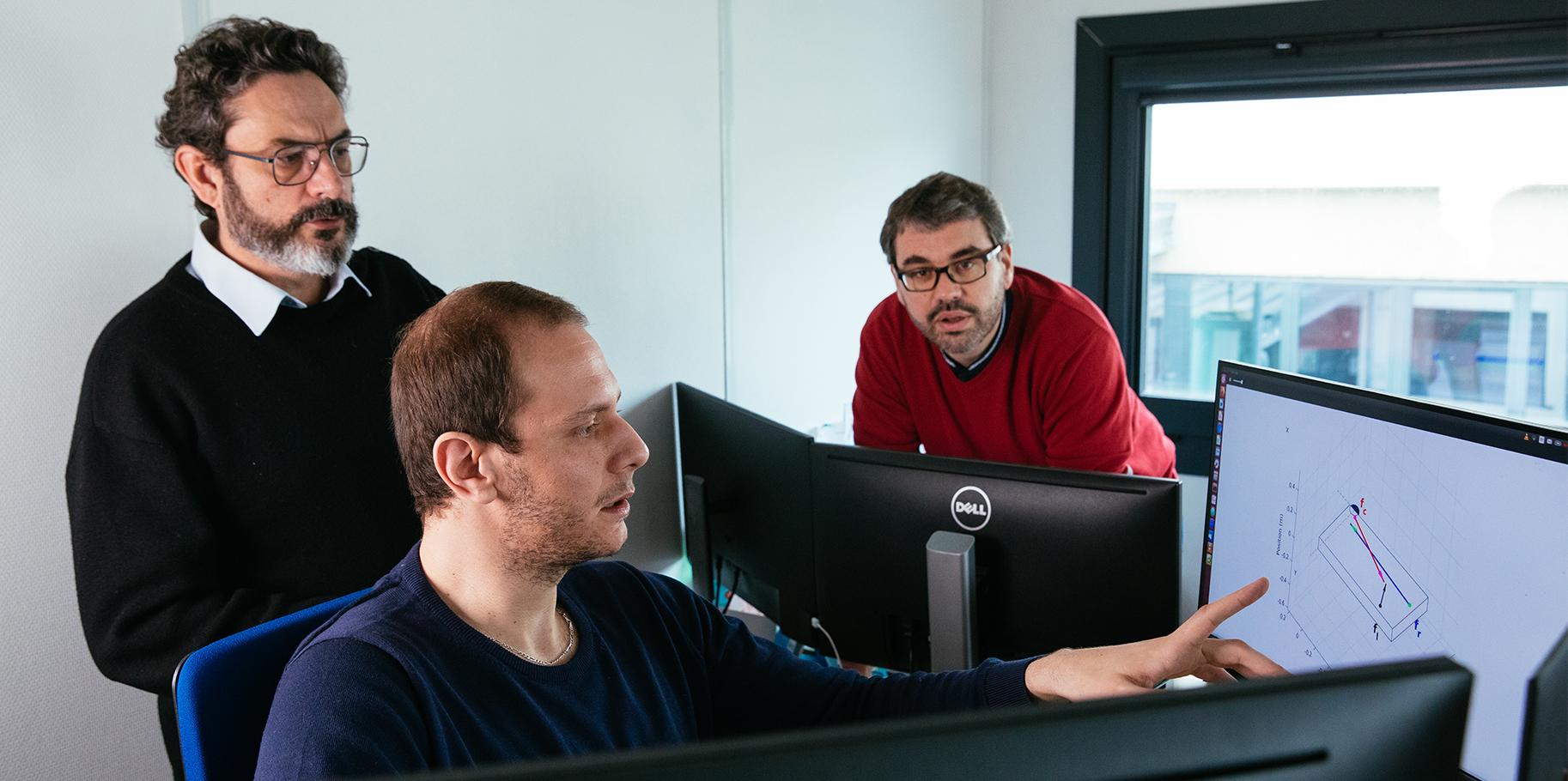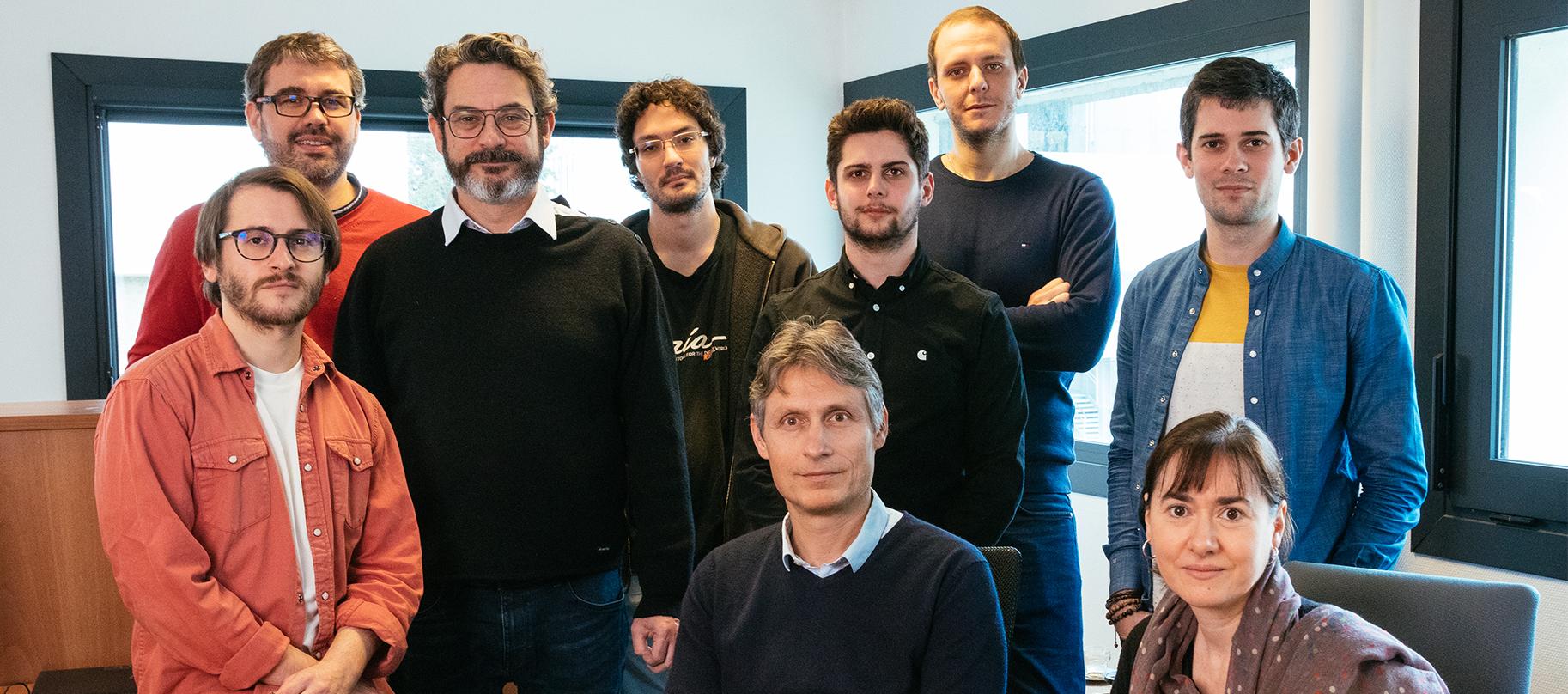Making work less strenuous: companies are turning to Inria cobotics
Date:
Changed on 23/11/2023

Whether it’s lifting heavy manhole covers, cleaning sticky residue off of the insides of large tanks or adding the finishing touches to a piece of wood on a machine tool turning at 8,000 turns a minute: the cobotics projects run by Auctus are linked to situations found in real workplaces on a daily basis.
Mass-produced cobots are already used for the simplest tasks”, explains Jean-Marc Salotti, a professor at the École nationale supérieure de cognitique and a permanent member of the team. “We were studying tasks that were too complex to entrust to robots, but arduous or risky enough to justify intelligent assistance for operators.
Why “intelligent”? It’s because the cobot interacts with the human operator, getting up close and personal with them. For safety reasons, it must be capable of slowing down its movements or applying less force. It can also adjust its level of involvement depending on how safe the task is or how tired the operator is, meaning it must be able to see them.
These issues draw on IT, automation, cognitics, the human sciences, etc. Together, the thirteen individuals who make up Auctus, four of whom are teacher-researchers, have all of these skills.
No two projects are exactly alike, given that these relate to specific situations. However, the subjects tackled by the team remain the same. Firstly, is it possible to develop a cobot for the workstation in question? “This is not always straightforward - it might involve helping an operator make a complex tie for clamping cables, for example.” They then have to look into how tasks and decisions will be divided up between the human operator and the cobot. To what extent should the task be automated?
Another question is: which sensors and which signals will tell the cobot what they have to do? It is easy to measure pressure or temperature. However, it is more complicated to determine whether or not a cobot has hit an obstacle (in which case they will need to stop or reverse) when it is scraping the bottom of a tank, given that it must continue to clean it. As for human activity, this is very difficult to interpret.
Jessica Colombel, a PhD student and member of Auctus, is looking to analyse the bodily signatures of people as they walk in order to determine whether they are happy, sad, angry or not showing any particular emotion.
Methods do exist, but they weren’t designed to improve interactions between cobots and operators: they lack precision and have to be refined.
The long term-goal is to be able to detect when operators become fatigued or less vigilant, in order to adjust the cobot’s response; or, in another context, to be able to determine whether or not an elderly individual requires assistance when there is a risk of them falling, when performing a half turn, for example.
At the start of each project, the Auctus researchers meet up with the operators who are directly involved.
They are best placed to explain to us what they do, the difficulties they face and their expectations”, explains Jean-Marc Salotti. “In some jobs, they hold onto certain arduous tasks because they feel them to be rewarding. What we want to do is to reduce arduousness at all costs by eliminating these psychological aspects. There are challenges surrounding both acceptability and ethics.
Jessica Colombel is very much on the same wavelength: “Cobots should offer assistance, but they should never impose it. This is why we want to analyse human behaviour in closer detail.”
This behaviour can have some surprises in store. Jean-Marc Salotti studies how operators react when cobots stop working unexpectedly. In experiments carried out with test groups, 90% of subjects immediately went over to the cobot, despite having been given strict instructions to keep their distance. “They were focused on the performance target we set them, prioritising efficiency over safety. What’s more, they believed that if the object was stationary then it must have come to a stop, meaning it was safe.”
The human operators reacted in the same way if the system stopped working in the middle of a given trajectory in an unusual position. In order to encourage users to exercise caution, it will perhaps be necessary to add a vibration or something similar to indicate an unexpected stoppage. The scope and the subtlety of interactions between operators and cobots means Auctus will have plenty of work to keep them occupied moving forward.

Auctus, the latest project team to have been set up at the Inria Bordeaux - Sud-Ouest Research Centre, has entered into a partnership with an apprenticeship training centre. This is to help with their goal of ensuring that spindle moulders, a type of machine tool used by joiners for shaping wood, are safer to use.

The Auctus project-team, common to Inria and the University of Bordeaux, is attached to the IMS, the laboratory for the Integration of Material into the System. Its objective is to design robotic assistance systems for the industrial sector, in line with the theme of cobotics (collaborative robotics).